
![]()
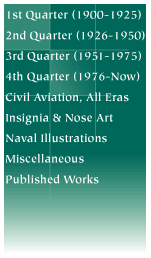
Siemens Schuckert D.III
By Bob Pearson
The scene: At the warning of approaching bombers, the pilots race to their fast-climbing interceptors. Soon they are among the hapless allied aircrew wreaking havoc on their formations.
The place: Skies over Germany
The year: 1944? No . . . 1918, and the interceptor is the Siemens-Schuckert D.III.
The SSW D.III was designed as a fast-climbing interceptor and was to make use of the new 11 cylinder Siemens-Halske 160hp counter-rotary engine. This engine featured a propeller and cylinders that rotated opposite to the crankcase, allowing a slower propeller speed for the same power and the elimination of torque among other things. Initial tests of the Sh.III engine in the SSW D.IIb saw the remarkable (for the time) climb of 7000m in 35 minutes, and the decision was made to design a new interceptor around it.
Tests with the prototype D.III fitted with a two-bladed propeller and long undercarriage that typified the first incarnation of the type. showed that ground handling left a lot to be desired, therefore a new four-blade propeller and shorter u/c were soon to be standardised on the production D.III. In tests against the Fokker D.VII and Albatros D.V, the SSW D.III was the faster of the three.
The first pre-production batch was ordered on 26 December 1917 and were numbered D.8340/17 -D.8359/17, the one shown below being the second pre-production aircraft. Note the full cowl and original rudder shape.
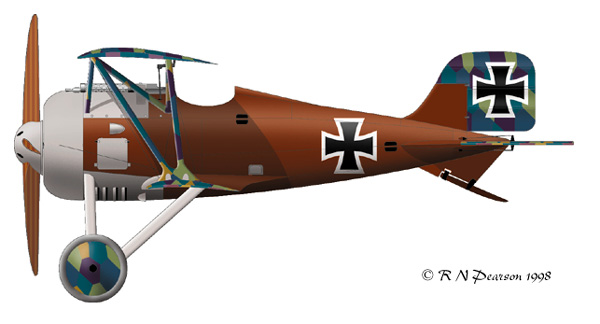
Seen here is D.III 8341/17 in ex-works finish of stained fuselage, natural metal cowl and five-colour lozenge on wings, rudder and elevators. In common with all the other SSWs profiled here the wing lozenge was applied at 45° to the leading edge. The interplane struts were also wrapped in lozenge fabric, possibly as protection against the wood splintering.
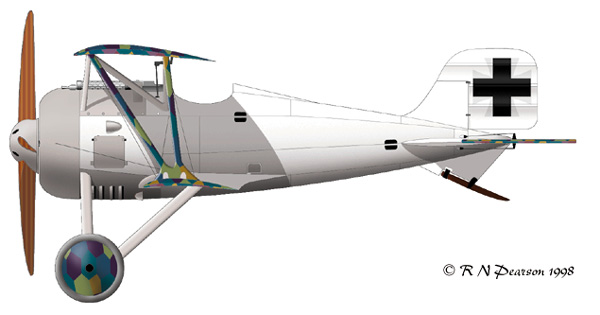
Siemens-Schuckert D.III D.8346/17
Ltn Walter Göttsch
OC, Jasta 19
April 1918
In April-May 1918 40 D.IIIs and one D.IV were sent to Jagdgeschwader II for evaluation. That seen here is D8346/17 and was to be the aircraft of Ltn Walter Göttsch of Jasta 19. At his behest D8346/17 had its fuselage doped in white, however Göttsch was killed on 10 April 1918, before he had a chance to use his white D.III. Also note the overpainted rudder cross.
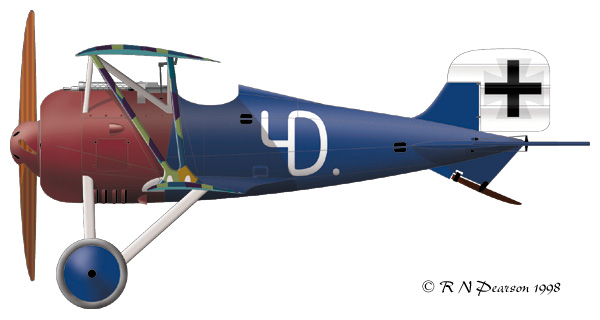
Siemens-Schuckert D.III 83xx/17
Ltn Oliver von Beaulieu-Marconnay
Jasta 15
May 1918
Another Jasta of JG.II to receive the SSW was Jasta 15. On 28 May 1918, von Beaulieu-Marconnay downed a French AR.2 for his first of an eventual 25 victories. To date few photographs of Js.15 SSW D.IIIs have come to light, therefore this profile is based on the Jasta marking practice. Formerly serving with the 4th Dragoons, von Beaulieu-Marconnay used their branding iron insignia on his aircraft. Later transferred to Jasta 19, which he would take command of on 2 September. On 16 October 1918 he was shot down and severely wounded by another German pilot. As it was understood that he was dying, his Pour le Merite was hurriedly awarded. He had turned 20 the month before . . .
Although the tests of the D.III and D.IV in combat had shown the type to be excellent climbers, it was felt they could be faster and more manoeuvrable. And when it worked the combination of SSW D.III airframe and Sh.III engine was 'faultless'. However after just 10 hours of operation the engines began to overheat, have pistons seize and crankcases shatter. The problem was traced to a bad batch of oil, but the damage was done and the D.III was withdrawn from service for upgrading. As it was withdrawn from service, the words of the JG.II commander, Hptm Rudolf Berthold, rang out "the Siemens fighter be made available again for Front-line use as quickly as possible for, after elimination of the present faults, it is likely to be become one of our most useful fighter aircraft."
At the factory the SSW D.III was now fitted with a new rudder, new ailerons, shorter wings, the engine cowl was cut away on the bottom for improved cooling and other, less visible modifications were made. The Sh.III engine was also banned from frontline service pending a 40-hour test.... This was completed in July and the type returned to service at the end of July.
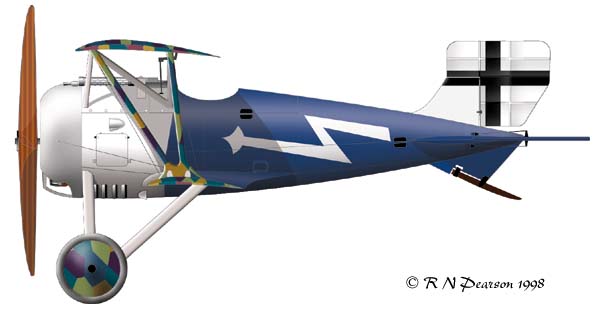
Siemens-Schuckert D.III
Ltn Alfred Greven Jasta 12
July/August 1918
Some of the D.IIIs were returned to JG.II/Jasta 12, including that seen here which was flown by Ltn Alfred Greven. Note that the cowl is now cutaway on the bottom, but not to the extent that will be seen on other D.IIIs. The marking of JG.II was a blue rear fuselage and tail, while the component Jastas used differing colours on the nose to identify their aircraft. As already seen Jasta 15 used red, while Jasta 12 used white, Jasta 13 used green and Jasta 19 used yellow. Greven's D.III has a natural metal cowl and white panels. His aircraft was also photographed with and without a spinner.
After the modified D.III and D.IVs were evaluated the decision was now made to assign the bulk of the fast climbing SSW D.IIIs to the home defence Kests and the faster, more manoeuvrable D.IV to frontline Jastas.
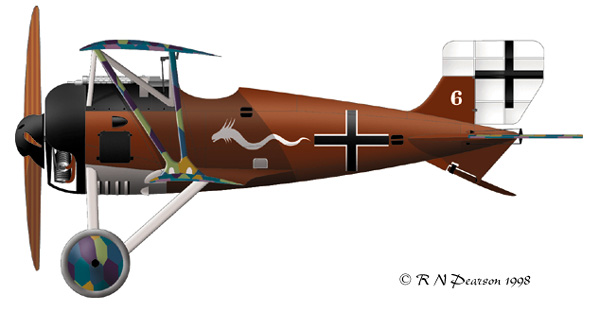
Siemens-Schuckert D.III 1611/18
Kessler (first name and rank unknown)
Kest 4b
Formerly with JG.II, 1611/18 was one of the D.IIIs that was returned to the factory for modifications.
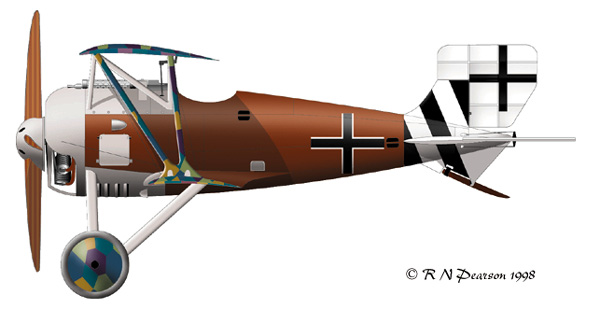
Siemens-Schuckert D.III 1626/18
Vzfw Reimann
Kest 4b
September 1918
Another D.III serving with Kest 4b was 1626/18, most of the aircraft of this unit had a small number on the fin and a personal motif on the fuselage. Reimann appears to have used a striped tail instead. Tailplane colours are unknown.
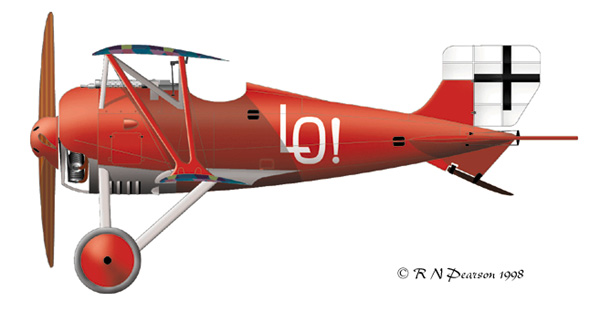
Siemens Schuckert D.III
Ltn Ernst Udet
Jasta 4
Metz Aerodrome
September 1918
The most famous D.III is that of Ltn Ernst Udet, however it is unknown if it was ever flown in combat. The name on the side is that of his fiancée Elanore 'Lolo' Zink, and was carried on all his aircraft in 1917-18. Udet survived the war with a total of 62 victories.